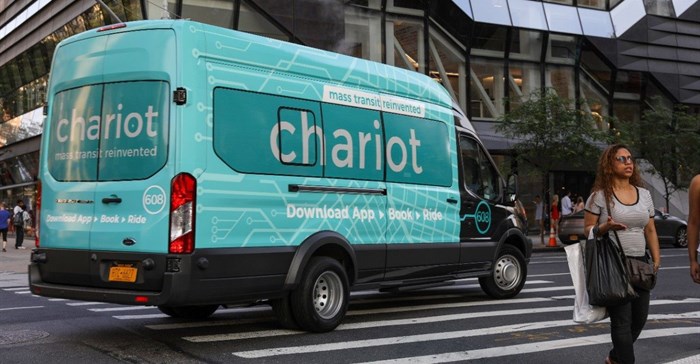
Top stories


Logistics & TransportIata urges global safeguards for aircraft systems as 5G/6G rollout continues
6 hours

AgricultureAgricultural exports from Africa are not doing well. Four ways to change that
Lilac Nachum 7 hours



Chariot offers commuters, some of whom live in areas that are not within walking distance of public transportation, a new way of getting from point A to point B. During typical commuting times, the shuttles will travel to busy areas where people work, then bring them back at the end of the day.

“Our mission is to provide reliable, safe and affordable transportation for as many people as possible,” said Chariot CEO Ali Vahabzadeh. “We want to connect people more easily to where they want to go – whether they need help making it to a transit hub or live in an area underserved by public transportation.”
New York is the latest market to get the service, which is launching with two pre-planned service areas in Manhattan and Brooklyn, at a flat rate of $4 per ride. People can create additional service areas through crowd-sourcing. By this fall, it plans to have 60 vehicles operating in New York City.
As part of the New York launch, commuters will be able to use a streamlined crowdsourcing process to make the experience more user-friendly. The Chariot map will display service areas being crowd-sourced – giving commuters the chance to choose and contribute to these potential service areas.
Users can create a custom route for areas they feel would benefit from Chariot, then share their proposal with friends, family, and neighbours who may be taking similar commutes. Once enough riders sign up to support and fund a proposed route, as many Chariots as needed will be dispatched to service the area.

Ford’s global data, insights and analytics team is supplementing Chariot’s planning. The group helps Chariot identify potential routes using advanced optimisation algorithms based on commuter demand and behaviour, as well as traffic data and existing infrastructure.
Riders simply check the app to find commuter routes near them, then reserve a guaranteed seat as they head toward their assigned vehicle. Keeping the service affordable is a priority, and solutions such as WageWorks and commuter checks – which allow people to use pretax wages to pay for commuting costs – are fully compatible with Chariot use.
With New York City’s growing population, more people are using public transportation. In 2016, average weekday ridership on the subway was 5.7 million people – the highest since 1948, according to the New York Metropolitan Transit Authority. Annual ridership topped 1.7 billion.
Not only does the sheer number of commuters make getting around difficult, but access for people in the city’s transit deserts is a particular challenge. While 94% of residential units in Manhattan are within half a mile of a subway stop, only 54 percent of units in Queens are, according to research by New York University’s Furman Center. For many, simply getting to a transit point can be difficult.
“We know how important it is for everyone to be able to get around effectively – especially in densely populated places like New York,” said Jessica Robinson, director, Ford City Solutions. “Chariot is one way we’re trying to help cities accommodate their residents and ensure people aren’t sacrificing their needs as a result of limited mobility options.”
According to a study conducted by KPMG, every Chariot in operation can remove about 10 cars from roads.